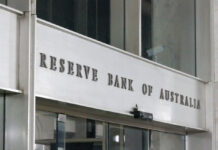Market movers today
- Today, ISM manufacturing and the ADP jobs report is released in the US.
- We get PMIs out of Norway and Sweden and in Sweden, Riksbank’s Breman also speaks (see more in Scandi section below).
The 60 second overview
New Fed call: We changed our Fed call yesterday on the back of Fed Chair Jerome Powell’s hawkish U-turn in recent days. On Monday, Powell argued that new COVID-19 outbreaks (and perhaps also the new omicron variant) are inflationary in nature. Yesterday, Powell argued that it is time to “retire” the transitory term and that it could be appropriate to increase the tapering pace so that the QE bond buying ends “a few months” earlier. We now expect the Fed to announce an increase of the tapering process from USD15bn per month to USD25bn per month starting from January. If so, the QE programme will end in April. This would make the Fed able to hike three times in 2022 with our base case being in June, in September and in December. We discuss in more details in Fed Research: Say farewell to team transitory – tightening sooner and faster.
Volatile markets: The combination of the Omicron fears and the hawkish comments from Powell weighed on risk appetite yesterday. US equites fell and the US curve flattened strongly. In FX space EUR/USD reversed some of the recent gains and risk sensitive currencies such as NOK and SEK came under pressure. However, note that these immediate moves have to a certain degree reversed overnight. US equity futures have moved into green, 10Y US yields have moved slightly higher, EUR/USD has edged higher and Scandies have seen some support. The market volatility this week underlines the market uncertainty that the combination of Omicron, Fed rhetoric and recent data surprises like European inflation creates. It all points to continued volatility in December where many investors furthermore close their books for the year, which can amplify market moves.
Recent Omicron news: Yesterday, Oxford University said that “there is no evidence so far that Omicron is any different” with respect to protection against severe disease for the AstraZeneca vaccine (see Reuters), something Ugur Sahin (co-founder of BioNTech) later repeated (see WSJ), so both AstraZeneca and Pfizer/BioNTech are sounding less concerned than the Moderna CEO did. Protection against severe disease is the most important feature of COVID-19 vaccines although it still makes sense for vaccine producers to update the vaccines from a risk-management perspective, while we are waiting for the lab study results. EMA says that it could approve an updated vaccine in three-four months from now if needed, see Reuters. Israeli Health Minister Nitzan Horowitz said that “there is already room for optimism and there are initial indications that those who are vaccinated with a vaccine still valid or with a booster will also be protected from this variant”, The same article in The Jerusalem Post mentions 93% efficacy against serious symptoms at least for those vaccinated with a booster. Merck says that it expects it COVID-19 drug to be effective against omicron.
Equities: Equities sustained the declines on Tuesday, driven by hawkish tone from the Fed and gloomy vaccine outlook from Moderna. However, this was not a full risk-off session as cyclicals generally held up the best, especially long duration/growth. Tech, autos and retail were among the best sectors, while telecom and utilities sold off -3% each. S&P500, Dow and Russell 2000 closed down -1.9%, Dow -1.9% and Nasdaq -1.6%. The sentiment is reversing in Asia this morning though and US futures have turned positive.
Oil. Oil prices fell to new low yesterday with Brent dropping below USD71/bbl. Oil prices are under pressure from the combination of new travel restrictions, release of strategic reserves and a hawkish Fed. OPEC+ meets tomorrow and may provide some much needed support. Short-term, the sell-off looks overdone in our view.
FI: There was a dramatic flattening of the US Treasury curve yesterday on the back of the comments from Fed chairman Powell at a testimony in the US Senate. Here he said that they will speed up the tapering as the rise in inflation may not be transitory. Furthermore, there no indication that the new variant of the corona virus would change this view. Hence, the 2Y-10Y and 2Y-30Y US curve flattened some 13-14bp.
FX: We focus on the narrative where 1) reopening/catch-up effects are fading, 2) the end to fiscal stimulus and 3) the beginning of monetary tightening. The market response to this is to add up on financial resilience. Being long dollar will remain an integral part of that cross asset rotation. Thus, we recommend selling the rally in EUR/USD.
JPY strengthened significantly amid the Omicron news on Friday. Yesterday, we saw another move lower in USD/JPY to 113 levels as a reaction to lower US yields and oil. Short term, USD/JPY is exposed to a bounce back in risk appetite, but we still see further downside potential to the cross, as the global economy moves from reflation mode and in to a period with slower growth and less inflation.
Credit: Following Monday’s stabilization in credit markets, sentiment turned again and credit was under pressure yesterday. iTraxx Xover widened almost 9bp and Main almost 2bp. HY bonds widened by 2bp while IG managed to tighten 1bp.
Nordic macro
Sweden: Two things on the agenda today; manufacturing PMI (Nov) and a speech by Riksbank Breman. Since the minutes of the November RB policy meeting have not been published yet, the speech will be a presentation of the monetary policy report. Regarding PMI there will of course be a lot of attention to supplier deliveries which appear to be off peak but remain at historically very stretched levels indeed. For instance, Volvo Cars reported yesterday that demand was strong in Q3 but production low due to supply shortages. Interestingly, the CEO said that the situation has improved somewhat of late.
Norway: The Norwegian manufacturing PMI appears to have peaked, although it is still well above normal levels. We have seen European manufacturing indicators improve slightly in November, probably thanks to a slight easing of capacity constraints. We therefore expect the PMI to increase moderately to 59.0.














